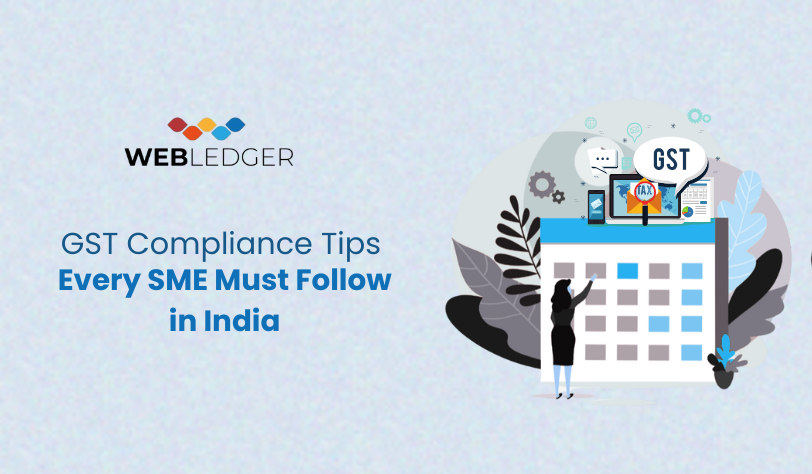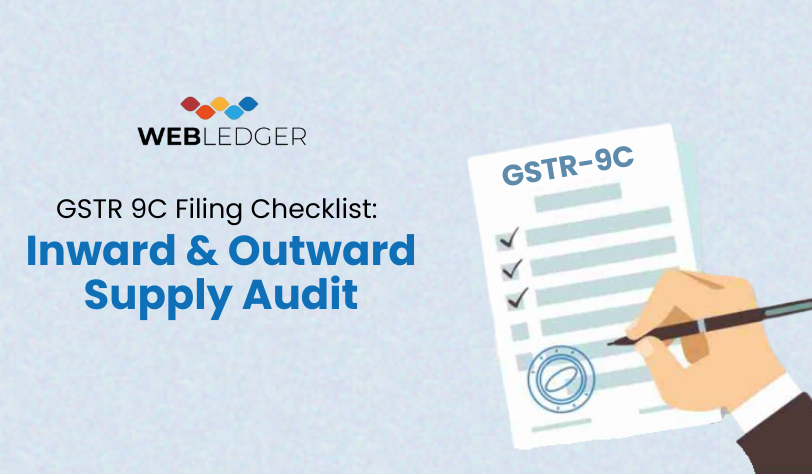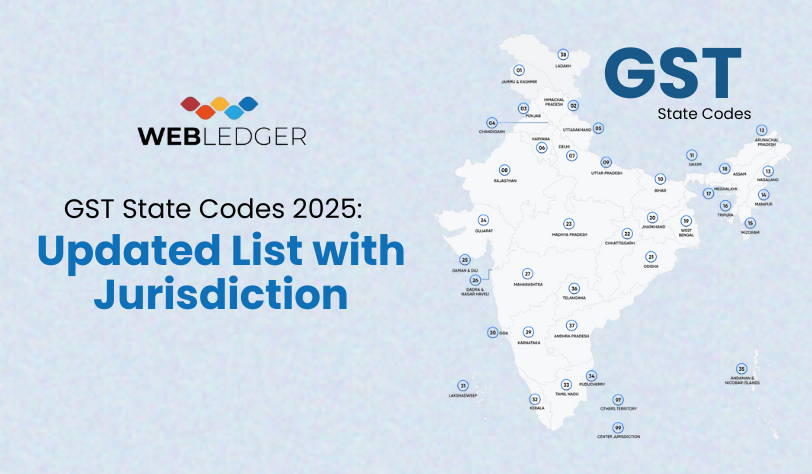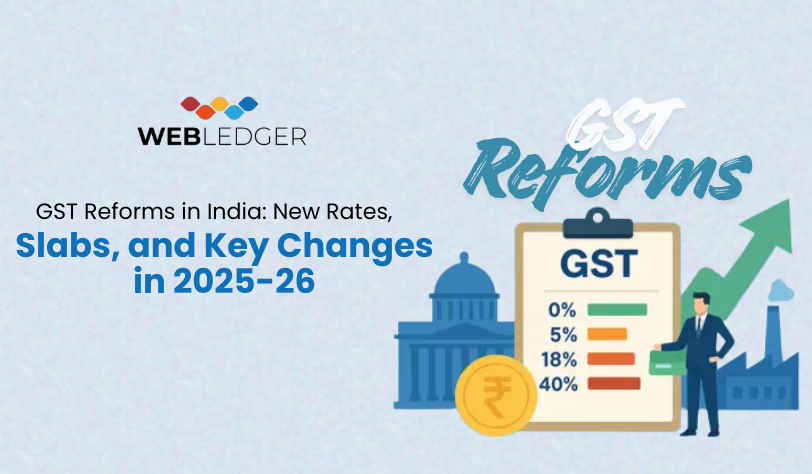Operating a small business in India is akin to walking a fine line between three jobs of maintaining clients, running the business, and making the taxman content. There is good news though because compliance with GST does not have to be a maze. Having a clear checklist, the appropriate tools, and some discipline, one can turn the tax season into a calming experience instead of a mess. What will be new in 2025 and how can you keep up—and not lose your peace of mind. This is where GST compliance for SMEs becomes the bridge between smooth operations and stress-free tax seasons.
What is in GST 2.0 in 2025?
India has experienced great upheaval in the GST ecosystem in the year 2025. The GST 2.0 implementation by the government is aimed at being simple, automated, and minimized manual errors particularly among small business and MSMEs that constitute the bulk of the Indian economy.
Businesses Essential News To Take Note Of
- Streamlined tax slabs: The previous 4-slab system (5,12,18,28) is being narrowed down to only two big slabs 5 (essentials) and 18 (standard goods/services).
- Increased tax on luxuries: There is a tax increase on luxury or sin goods, which is about 40%.
- Up-to-date HSN codes: The up-to-date code classifications assist businesses to determine the right product categories and prevent mismatches of tax.
- Pre-filled returns and quicker refunding: It is now automated such that the majority of the data gets submitted to invoices to filings.
- Auto-matching ITC claims: New technology decreases human errors during the reconciliation of Input Tax Credit.
Keeping pace with these changes is vital for GST compliance for SMEs, especially as automation and AI-driven updates redefine accuracy in filings.
Your Roadmap to GST Compliance in 2025, Step-by-Step
You should consider this part to be your GST survival kit. These are not check boxes given by the law, but business habits that create business credibility and financial stability. Following this GST filing tips India guide will help you stay compliant while focusing on growth.
GST Registration: Your First Port of Call to Compliance
In the event that your annual turnover is greater than ₹40 lakh for goods or ₹20 lakh for services (in the majority of states), you must register for GST. Registration is done online through the official portal—with the help of PAN, Aadhaar, business proof, and bank details.
Better Accounting
Please enter the OTP below to proceed.
Mini Tip: Although you are below the threshold, voluntary registration could enable you to claim ITC and be more credible among the clients. Such proactive steps form a strong base for GST compliance for SMEs.
Invoice Control – The Workhorse of GST Preciseness
Invoices are not documents, but compliance gold. Each invoice must include:
- GSTIN
- HSN/SAC codes
- Goods/services description
- Applicable tax rate
- Total taxable value
In the case of B2C transactions greater than ₹50,000, customer details must always be included.
Note: An omission in detail may void your invoice—and prevent your ITC claim.
Best Practice: Accounting software, preferably GST ready, should be used and it must automatically fill in the fields and integrate with the GST portal. This is where online GST software simplifies the process, ensuring no human error creeps in.
Input Tax Credit (ITC) Reconciliation – Don’t Leave Money on the Table
The greatest advantage of GST is ITC, but at the same time, one of the most difficult aspects. In order to claim ITC, your supplier should file his GSTR-1 properly. You lose your credit should they miss it.
Hint: You should balance your purchases not once a year, but once a month. Frequent checks eliminate the occurrence of shocks at the very end of the audit. With GST filing tips India, MSMEs can prevent mismatches and maintain steady cash flow through real-time reconciliation.
Making Returns – Be on Time (Be Better)
The GST system is a system that operates on schedules. Here are your key returns:
- GSTR-1: Supplies to be recorded related to outward (monthly or quarterly).
- GSTR-3B: A return of monthly summary along with payment of tax.
- GSTR-9: Annual consolidated return of your yearly financial year.
Miss a deadline? Late charge ₹50 per day and 18% interest on unpaid debts. Staying consistent with GST filing tips India and automation tools can eliminate such costly oversights.
Tax Remittance – Accuracy Assumptions
Make payment of tax dues when you file GSTR-3B through payment options of online payment interface—UPI, NEFT/RTGS, or net banking.
Do not think your Input Tax Credit balance will take all. Before submission it should be checked once to avoid punishment. Using online GST software ensures every remittance is accurate and reconciled before submission.
Work Smarter, Not Harder: Tech Solutions to a Smooth GST Compliance
And to tell the truth, no one opens a business with the vision of monthly filing of returns. However, compliance can now be faster, cheaper and practically foolproof with the help of technology.
Select the Best Accounting Software
Tally, Zoho Books, and ClearTax are GST ready. They automatically:
- Apply correct HSN codes
- Calculate taxes accurately
- Sync invoices with the GST portal
- Track ITC in real-time
Stat: In 2024, more than three out of five small businesses using cloud-based accounting tools indicated that they were able to save 30–40 percent of time on compliance work. This growing adoption shows the power of online GST software in enabling easy GST compliance for SMEs across industries.
Automate Invoice Tracking
The digital invoicing systems impose taxes automatically and identify anomalies early on—such as a compliance watchdog that does not sleep. In case of micro businesses, a properly made Excel sheet with conditional formatting can save hours and headaches. Integrating automation and online GST software reduces compliance stress and ensures timely data updates.
Never Miss a Deadline
Arrange Google Calendar reminders, Trello boards, or WhatsApp reminders of all the due dates—GSTR-1, GSTR-3B, and GSTR-9. Penalties that are charged on late filing are automatic and hence the only way in is to keep ahead. These reminders, paired with GST filing tips India, make compliance smooth and predictable.
Indian MSME Story: Why Compliance Builds Credibility
The 6.3 crore MSMEs in India are providing about 30 percent of the GDP and employment to more than 110 million individuals. However, many of them still cannot cope with paperwork and manual filing.
The Digital India program, e-invoicing, and automation of the GSTN are government programs set to put the playing field on equal terms. Through adopting digital technologies and making them compliant, MSMEs will be able to:
- Increase lender and investor confidence.
- Receive quicker refunds and government subsidies.
- Establish clear business documentation that is appealing to long-term clients.
Adopting GST compliance for SMEs practices backed by online GST software makes businesses more transparent, reliable, and scalable in a competitive market.
Need a Helping Hand? Partner with GST Experts
Balancing compliance and operations is like fine china—delicate and valuable. In case the checklist is overwhelming, professional assistance can be a difference maker. Software platforms such as LegalWiz help MSMEs with registration, filing, ITC reconciliation, and annual returns—so that you can concentrate on building your business.
Consider it as having a co-pilot that knows every twist of the GST maze.
Pro Tip: Outsource what steals your time. Compliance outsourcing is not a cost, but an investment in focus and calmness. Even experts rely on GST filing tips India and advanced digital tools to stay efficient.
GST Compliance Need Not Be a Complex Process
At this moment, it is obvious that GST is here to stay and its mastery is a major consideration in the running of a successful MSME in the year 2025. Compliance is not only about escaping punishment; it is about establishing trust, efficiency, and financial stability.
By having this full audit GST compliance checklist, the correct technology, and a proactive mindset, you will remain audit-ready and stress-free throughout the year. Make work smarter, be informed, and make 2025 the year that compliance becomes your competitive edge—with GST compliance for SMEs, smart online GST software, and actionable GST filing tips India guiding the way.




